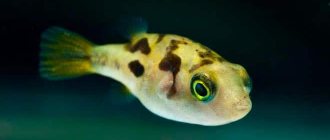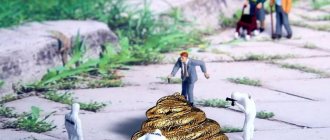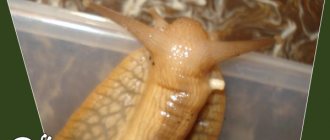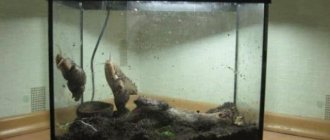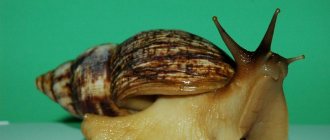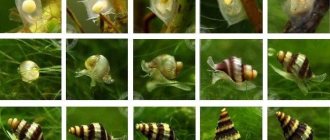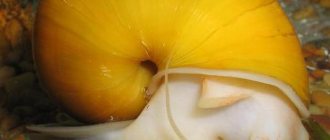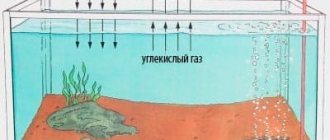All snails are vegetarians. Therefore, the question of what you can feed snails implies that the diet will be based on fiber. Three main components of the diet of domestic Achatina, on which the health of the pet depends:
- fiber sources;
- vegetable proteins;
- mineral supplements.
The main food is fruits and vegetables and lettuce. Achatina eat all kinds of herbs with pleasure, including if they grow right in their terrarium.
Buy your pet a large and beautiful house inexpensively and sow various herbs, moss and cereals there. And your pet will be happy.
Before feeding snails, all permitted products are washed well with running water without using detergents. Loving owners of Achatina should remember that the health of the snail depends on how balanced the menu is.
Feeding mode
Breeders believe that if we are talking about the growing body of a young Achatina, then it needs to be fed daily. And the hatched little snails are even fed several times a day so that they do not lag behind in development. Adult snails can go without food for two to three days. It is believed that Achatina herself will let you know when she is full. Here are just a few signs when you need to stop feeding your pet:
- refusal of food;
- sluggish and reluctant eating;
- a large amount of food remains on the plate.
Domestic snails Achatina, like mammals, have food preferences. Some owners have noticed more than once how the snail refused, for example, cabbage in favor of a cucumber or banana. Taste habits can change with age. Young snails love living vegetation, while adults love rotting roots.
Conclusion: you need to feed your domestic Achatina with a variety of foods, but not spoil the animal.
List of approved products
The list of what you can feed Achatina snails is wide, despite the lack of animal proteins in it:
- berries (strawberries, cherries, cherries, wild strawberries);
- greens (lettuce, dill, spinach, celery, plantain);
- fruits (peaches, pears, apples, bananas, apricots, kiwi);
- vegetables (zucchini, cucumber, tomatoes, peppers, all types of cabbage, carrots, legumes).
The most popular foods for snails are cucumbers, lettuce, zucchini and bananas.
In addition to fiber, Achatina snails can be fed with vegetable protein:
- nuts;
- milk;
- sour cream;
- Hercules;
- raw mushrooms;
- oatmeal;
- pet food.
As a source of calcium, you will need dietary supplements such as cuttlefish shell, chalk, eggshells or shell rock. Minerals are poured in small quantities onto a plate on top of the main food.
Interesting fact: with the help of diet you can influence the color of the shell of the domestic Achatina. If from childhood you feed Achatina with foods of bright colors, such as tomatoes or carrots, the shell will acquire bright, beautiful shades.
Vegetables, fruits and mushrooms should be served to the snails on a “plate” made of lettuce. It is better to feed snails with coarsely chopped products. Fresh aromas immediately attract Achatina. They are active and, due to their numerous teeth, easily cope with products of different hardness and consistency. It is better to feed young domestic Achatina with grated carrots and other vegetables, but do not grind the fruits into liquid puree, as the babies will not eat it, but may choke or suffocate in the soft mass.
There is no need to cook anything for snails! High temperatures kill beneficial vitamins in fresh plants. Even cereals, minced meat, and Achatina oatmeal are eaten ground to powder form, but without harmful heat treatment.
Prohibited foods in the diet
The following list will clearly demonstrate what you should not feed Achatina snails. These products are dangerous to the health and life of pets, and most importantly, they can lead to their death or painful, protracted illnesses. Prohibited products include:
- Salt is the white death of the Achatina snail! A few grains of salt can kill 2-3 babies and an adult.
- Food from the people's table! Domestic snails should not eat anything fried, spicy, pickled, sweet or smoked. It is forbidden to feed even on trial, even as an experiment.
- Pasta and any flour products will lead to death. The snail will not be able to digest such heavy food.
- It is not recommended to feed Achatina eggs, even boiled, due to salmonellosis. However, some breeders pamper their pets with this valuable protein product.
- Bitter, hot and sour vegetables are prohibited - onions, garlic, radishes, sorrel, wormwood, tomato tops.
- Citrus fruits are not recommended due to their high acid content.
- It is not advisable to feed potatoes even when boiled!
- Semolina swells greatly and absorbs water, making it difficult for weak, delicate Achatina to digest.
From the two lists given, we can conclude what can and cannot be fed to Achatina snails and how to create a complete daily diet. But it will not be complete without mineral supplements that will provide the delicate Achatina with vital microelements.
Calcium is an essential element for life and reproduction
During the period of growth and development, as well as for the birth of full-fledged and healthy offspring, Achatina especially needs calcium. The daily diet of African Achatina must include mineral supplements and calcium-containing foods. They are fed as powders or additional toppings for fresh vegetables and fruits.
It is recommended to use the following as permanent mineral supplements:
- Eggshells, feed chalk, cuttlefish shell, shell rock;
- Healthy cereals - rice, millet, oats, buckwheat, bran;
- Daphnia fish food or other high-quality food.
Read more about the use of chalk and sepia in the diet of Achatina snails.
The solid ingredients must be ground in a coffee grinder and then mixed in an airtight container with a lid. Before grinding, the shells of raw eggs must be doused with boiling water and thoroughly dried. Achatina should be fed with this healthy flour at each feeding in the form of an appetizing sprinkle on pieces of apples, pears, cucumbers and other fresh plants.
Important! It is necessary to ensure that the powder is perfect, without pieces of hard shells or large food granules. For the delicate insides of Achatina, any sharp, hard particles are extremely dangerous.
What to do if a snail's shell breaks?
This is one of the common problems that breeders face - cracks or chips in the shell. They usually appear when a gastropod falls from the lid of the aquarium or the owner drops it on the floor. But it can be dealt with, the shell can be treated, unless of course it has completely fallen off, in which case the animal may die.
So, proceed as follows:
- Carefully remove sharp pieces with nail scissors;
- If large fragments fall off, glue them back using film from a raw egg, and secure on top with a band-aid;
- Or plaster it carefully, but make sure that the plaster does not get on the animal’s skin;
- Place the victim in another container until recovery;
- Increase foods containing calcium in your diet.
After 4-5 days, if the individual is not very old, a film will form on the crack, which will harden over time and become part of the shell. From now on, be careful with your pets - try not to pick them up too much, and lay soft moss on the bottom of the house.
Clam breeders tell amazing stories about their pets, that they recognize them among strangers and even become a little tamed. If you don’t believe me, try it yourself - this is an extremely unpretentious animal that can be left for a long time and does not need to be walked. Moreover, now you know what snails eat and what they don’t and how to care for them.
Feeding snails in winter
During the ripening period of fresh vegetables and fruits, you can feed Achatina without problems. They are voracious and even eat plant food waste. But in winter, the variety of fresh plants sharply decreases and owners have to rack their brains about what to feed the African Achatina snails, lovers of juicy vegetables and fruits.
Experienced breeders recommend:
- Lean on grain grinding - process buckwheat, rice, pearl barley into flour.
- Pumpkin, carrots, cucumbers, zucchini, squash, turnips, bananas and apples are among the available and inexpensive products all year round. You can feed Achatina in a variety of ways, making mixtures of their cereals, mineral supplements and various vegetables, changing the composition every day.
- If possible, add pure cottage cheese without harmful additives to the diet 1-2 times a week; snails eat it with great pleasure;
- It is recommended to grow your own greens and lettuce in pots in winter to the delight of your beloved Akhatina plants.
- For variety, you can give chicken meat, baby vegetable purees and cereals.
Achatina are real gourmets! The natural freshness of plants and a rich variety of vitamins are important for their diet. But snails are predatory and voracious, so their diet can be varied with dried plankton from fish food. Additionally, it is advisable to add rotten algae and aquarium plants; they will become a real feast for Achatina during fasting vegetarian days.
Achatina snails: what they eat
Achatina is one of the largest land mollusks. Recently, African snails have become very popular as pets. They quickly get used to their owner and are unpretentious in care and nutrition. Nevertheless, it is worth paying attention to some points related to creating an optimal atmosphere for giant mollusks.
Despite the fact that mollusks are absolutely not picky about their diet, it is important to remember what African snails eat and what feeding rules must still be followed. They can be given fruit:
- apples;
- pears;
- cherry;
- cherries;
- plums;
- peaches;
- apricots;
- grape;
- bananas;
- strawberries;
- strawberries;
- kiwi;
- watermelon;
- melon.
Among the vegetables Achatina loves:
- cucumbers;
- zucchini;
- tomatoes;
- pumpkin;
- carrot;
- cabbage;
- Bell pepper;
- radish;
- corn;
- peas.
From greens you can offer them:
- salad;
- spinach;
- celery;
- dill;
- parsley;
- dandelion leaves.
Snails will not refuse fresh mushrooms, oatmeal, baby vegetable and fruit purees, boiled eggs, and chopped nuts.
It is advisable to diversify the diet as much as possible. Adults are fed 2-3 times a week, young ones - every day. The snail determines the required amount of food itself. After feeding, the remaining food is removed from the terrarium to avoid rotting and breeding fruit flies. It is better to choose the feeding time in the evening, since Achatina is awake at night.
Snails have the ability to remember the place of feeding, so it is advisable to immediately decide on the location of the “dining room”. Achatina, like all snails, needs enough water. One of the mandatory elements of the terrarium should be a bath of water. In addition, after each feeding, it is necessary to irrigate the walls of the terrarium with a spray bottle.
Achatina are of particular interest. This is a large species of gastropod. They often become human pets. The key to diet planning is food variety. A well-prepared diet with various products will provide balanced nutrition for the mollusk.
- carrot;
- cabbage leaves;
- cucumbers;
- lettuce leaves;
- fruits and berries;
- flowers of fruit trees.
A well-composed diet with various products will provide balanced nutrition for the mollusk
Prohibited foods for Achatina are the same as for land species. Particular attention is paid to dietary diversity. Achatina happily eats plants such as plantain, yarrow, various meadow plants, as well as elderberry and forget-me-not flowers. Herbs intended for your pet should be collected outside the city, so as not to feed herbs that have absorbed exhaust gases, city dust and other poisons. The grass brought home needs to be thoroughly washed, dried and partially frozen for future use, so that there is something to diversify the mollusk’s diet in winter.
You can diversify the diet of Achatina by including mushrooms and fish food in the menu; fermented milk products. Special baby food without additives, made from vegetables and meat, is perfect.
The diet of young individuals is slightly different. Their food should be coarse and crushed. For example, lettuce leaves are cut and kneaded, cucumbers are also finely chopped. Pureeing foods is prohibited. Baby snails should not be fed with fork-mashed bananas, strawberries or vegetable puree.
We suggest you read: Ultraviolet lamp for a terrarium, how to choose
Calcium in diet
The issue of having enough calcium in the diet is extremely important. The main part of this element is spent on strengthening and renewing the shell, which protects the internal organs. If the pet receives little calcium, then over time the shell becomes soft. It can be easily damaged or deformed.
Getting enough calcium in your diet is extremely important.
An excellent source of calcium is natural chalk, egg shells that are pre-ground, as well as grains such as oats, millet and buckwheat. If it was not possible to avoid damage to the shell, care must be taken to ensure that the pet does not die while it is being restored.
Principles of organizing proper nutrition for African Achatina
There are basic principles of snail nutrition that apply to all species:
- Achatina’s daily diet should include a variety of plants;
- Important animal proteins supplement the snails' main diet;
- The third mandatory component of the diet of Achatina snails is mineral feeding.
The nutrition of African Achatina snails at home is based on these three basic principles. A constant lack of one of the components will lead to illness in the tender snail and its possible death.
The African snail Achatina in its natural habitat prefers leaves and grass, tree bark and juicy tropical fruits. It seems that Achatina are real gourmets, they can eat fresh herbs and immediately snack on half-rotten berries. Certain species of Achatina consider fallen rotting wood a real delicacy and can eat it entirely in a huge colony without leaving a trace. As you know, snails have many teeth, they are quite voracious, often attack large plantations of cultivated plants and in a short time cause irreparable damage to farming.
On a note! Any human food, bread and other flour products are strictly contraindicated for domestic snails.
Under no circumstances should cut up newspapers be placed in the aquarium of domestic snails as bedding. Eating paper, especially with printed font, will lead to the death of pets. And, most importantly, the tender Achatina is very afraid of grains of salt. They corrode their thin skin and burn their insides. Half a teaspoon of salt can kill an entire herd of defenseless snails!
It is not advisable to include citrus fruits and other sour fruits in the daily diet of Achatina snails. Any strong acids negatively affect the digestion and vital functions of Achatina. These foods are not strictly prohibited; they can be given in limited quantities and the reaction and condition of the snails can be monitored.
What do snails eat at home?
At home you can feed her what we listed above. From food from your table you can give:
- Spinach and celery;
- Cabbage leaves;
- Beans and peas;
- Pumpkin;
- Carrots, cucumbers and tomatoes;
- Red pepper and zucchini;
- Boiled potatoes;
- Cereals.
From fruits take:
- Pears;
- Apples;
- Plums;
- Grapes and apricots;
- Watermelons and melons.
Be sure to maintain the water regime, but with caution - the water should be boiled and in small quantities so that the animal does not drown. The best option is to spray the walls of the terrarium.
Stick to an evening feeding schedule as they are primarily nocturnal creatures. In winter, you will have to feed it extremely rarely, only during the waking period. But sometimes, living at home, mollusks change their lifestyle and are as active in winter as in summer. Therefore, watch them and be guided by their behavior.
Variety and mode
Domestic snails need protein food for normal growth and reproduction. Once or twice a week you can pamper them with thoroughly ground minced meat and meat and bone meal.
Calcium is also vital for growing and pregnant snails. To do this, you need to put chalk, crushed eggshells in the aquarium, or buy a special sepia supplement - a mineral stone for birds.
If calcium is purchased at a pharmacy, it must be pure without sodium or other additives.
There are several important points in organizing Achatina’s nutrition:
- The feeding of domestic Achatina snails should be regular.
- It is better to serve food on a plate or on a leaf of lettuce once a day in the evening.
- Young snails should have food available at all times, but it is important to ensure that it does not spoil and that insects do not infest it.
- It is advisable to serve soft vegetables and fruits in pieces, and grind hard ones into a paste.
- Water should be constantly available, but the level in the drinking bowl should not exceed a height of 1 cm.
The diet of all types of domestic snails depends on the location of the breeder and seasonal plants. Nutrition can be based on the characteristics of the species and the preferences of the Achatina itself. The main thing is to exclude prohibited foods, and other vegetables, fruits and herbs can be given to the snail without restrictions. Achatina will decide for herself what she likes best and what products will benefit her growth, development and reproduction.
What should you not give them?
There are products that are contraindicated for feeding snails; they cannot be found in the natural environment, and they can be extremely dangerous for mollusks:
- Any pickled, smoked and salted foods;
- Sweet and butter products;
- Pasta is too hard for them;
- Raw potatoes (only boiled ones will do);
- Anything that contains food additives and spices;
- Ready-made food for cats and dogs;
- Pork and lamb are too fatty.
Toddlers need calcium to strengthen their shells, but don't use school chalk or drugstore tablets. Uncooked eggshells, finely ground, cottage cheese and meat and bone meal work well.
Maintain animal hygiene, otherwise they will get sick. To do this, periodically give them a shower with a spray bottle, clean the house of mucus and change the soil. But you should not wash the snail under running tap water, it is too hard and contains chlorine. In addition, you may not be able to hold the baby and it will swim away.
